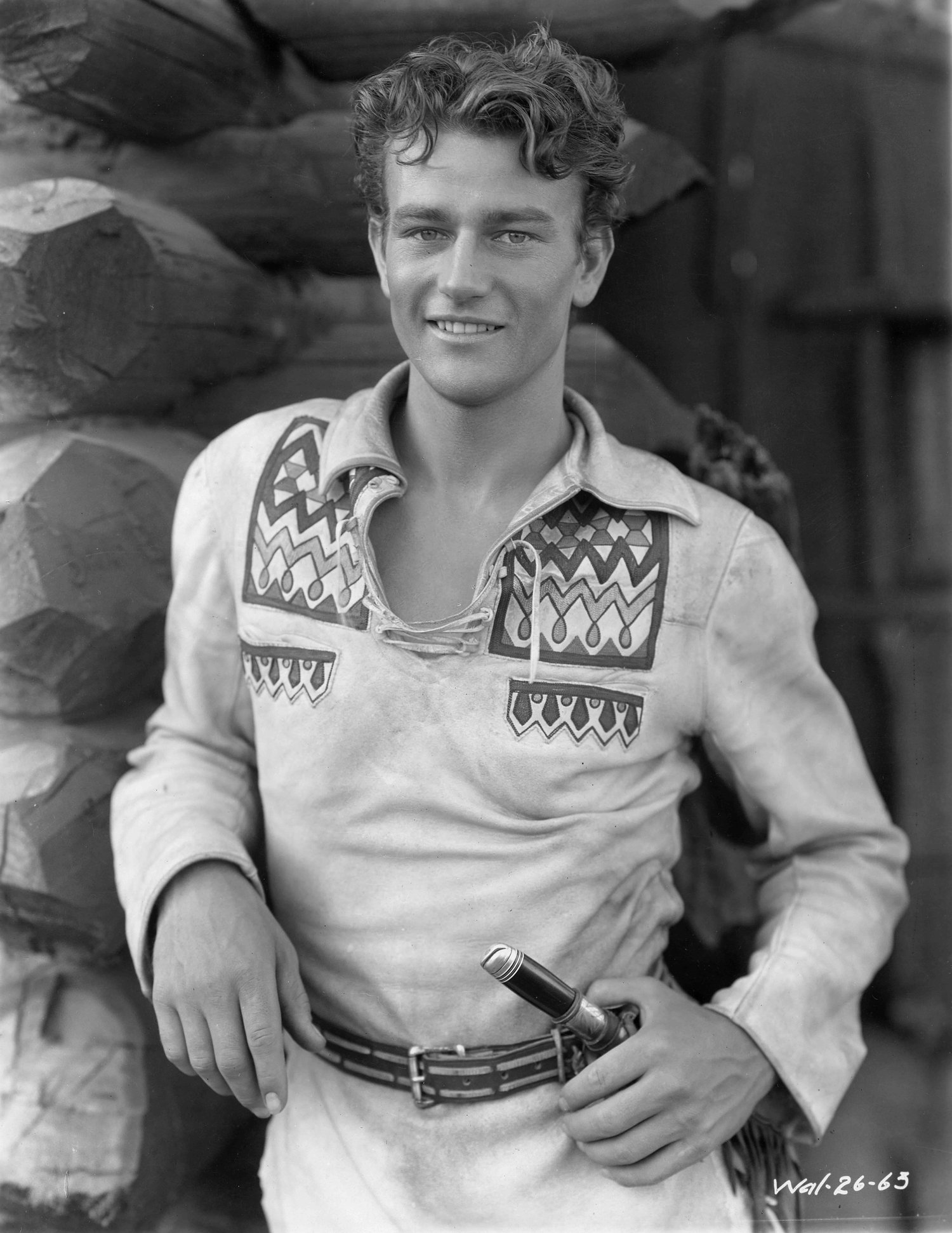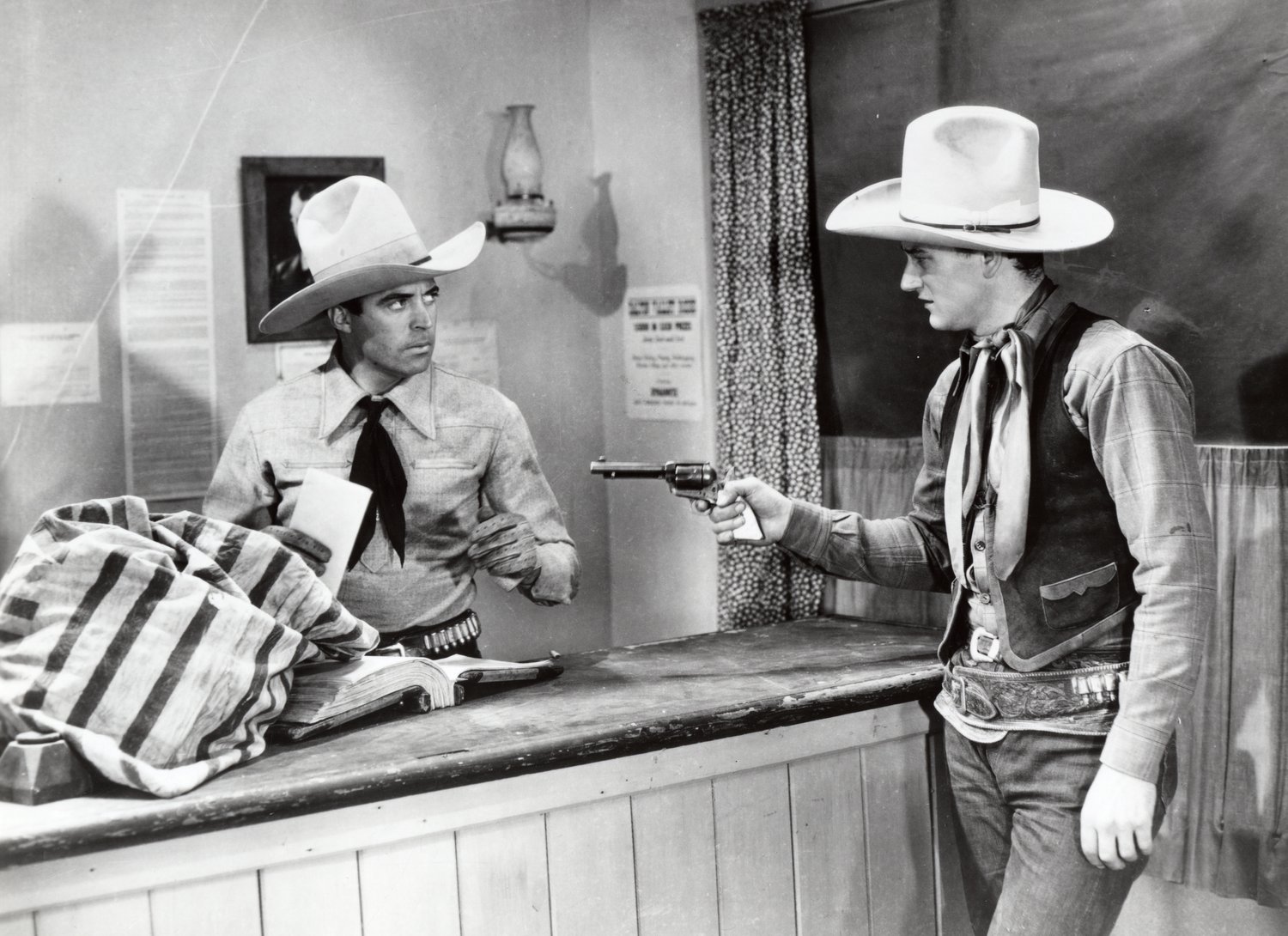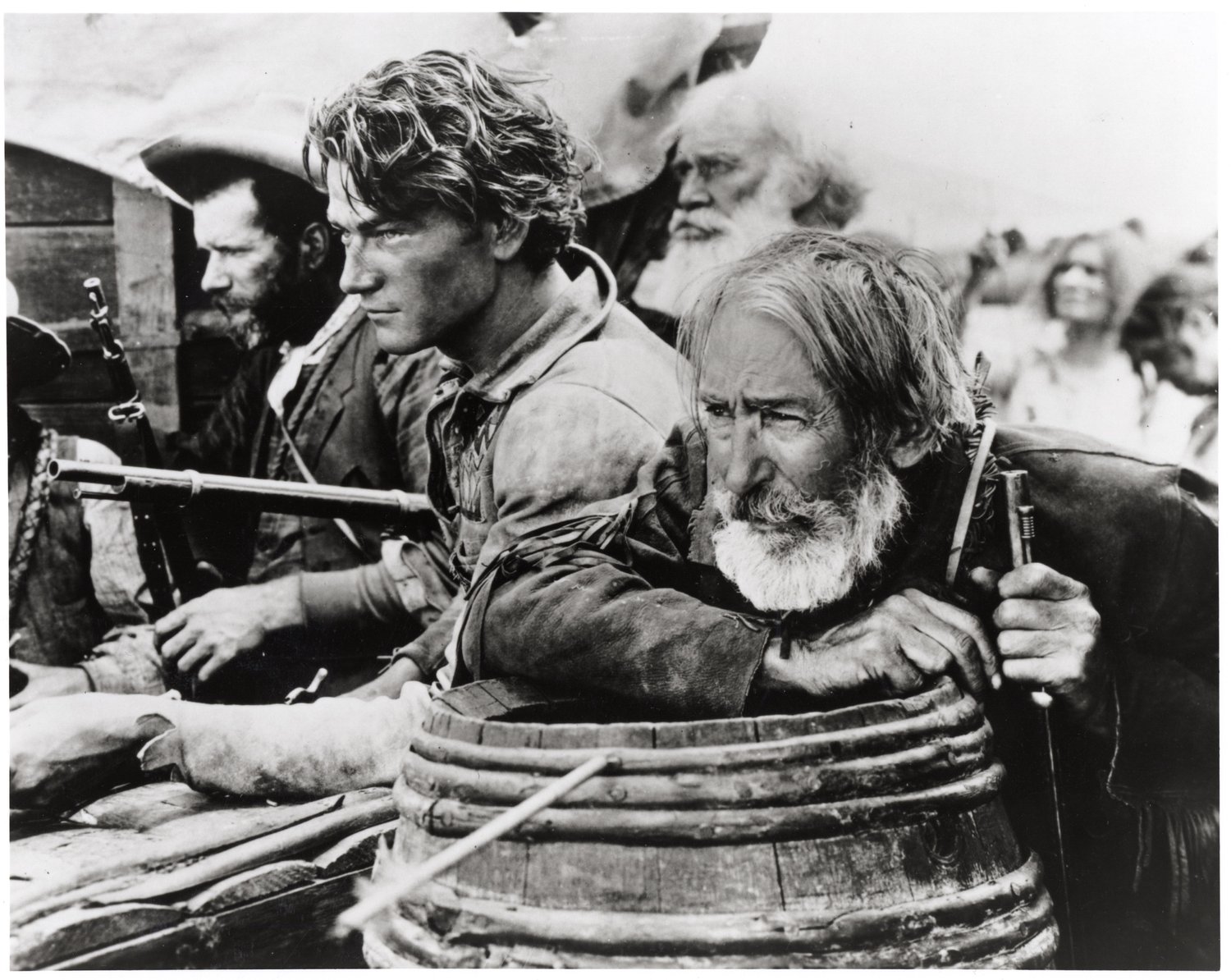
FROM STAGEHAND TO A NEW SCREEN PERSONA, MARION “DUKE” MORRISON STARTS DOWN THE ROAD TO STARDOM.
Written by Constance Dunn
“How are ya, Zeke?”
These were the first words spoken by John Wayne in The Big Trail, and as opening movie lines go, it gave no indication of the enormity of the career that lay before its 23-year-old star. After a few years of working as a stagehand at Fox Studios, including time spent as a stunt man, an extra and a minor player, Marion “Duke” Morrison had clinched his first starring role as rifle toting Breck Coleman leading a wagon train westward in director Raoul Walsh’s 1930 epic.
During this time, studio executives gave Morrison his stage name, John Wayne, and a $75-a-week movie contract, which in the Great Depression, amounted to pennies from heaven. Throughout this decade, Morrison would churn out a roster of low-budget Westerns and B-pictures, learning moviemaking from the inside out, and laying the groundwork for John Wayne—legend.
“When you stop fighting, that’s death. ”
— JOHN WAYNE AS BRECK COLEMAN, THE BIG TRAIL (1930)

Working in the rough and tumble world of 1930s cinema, Wayne was uniquely positioned to learn from the best. There were colleagues (and friends) like Yakima Canutt, an Academy Award-winning stuntman with whom Wayne collaborated on new stunt and fighting techniques—on-camera standards still used today. Then there was Harry Carey Sr., a major 1920s film star who inspired many aspects of Morrison’s still-developing screen persona.
But no influence was greater on the emerging actor than director John Ford, who Duke first met while herding geese for the auteur back in his Fox lot days. “In the years to come, Ford would teach me everything I know about filmmaking,” Wayne wrote in his unfinished autobiography. “The strength of his craftsmanship—more than craftsmanship—his special sort of genius attracted me.” And likewise. In the late 1930s, Ford cast Wayne as the outlaw Ringo Kid in his new Western. Cast and crew headed to Monument Valley, a boldly scenic region along the Utah-Arizona border where much of the film was shot, and when Stagecoach was released on March 2, 1939, it caused a sensation. Nominated for seven Academy Awards, including Best Picture and Best Director, the landmark film elevated its director, lead actor and the Western genre to new heights.
“…Ford would teach me everything I know about filmmaking. ”
— JOHN WAYNE ON DIRECTOR JOHN FORD, FROM HIS UNFINISHED AUTOBIOGRAPHY
A couple of months later Wayne, now a bona fide movie star, celebrated his 32nd birthday. He had finally arrived. But he wouldn’t stay long… superstardom awaited.

“There are some things a man just can’t run away from. ”
— JOHN WAYNE AS RINGO KID, STAGECOACH (1939)
To see more of John Wayne by the decades, visit the John Wayne: An American Experience exhibit at the Fort Worth Stockyards in the National Historic District of Fort Worth, Texas. Located in the Historic Exhibits Building on the corner of Exchange Street and Rodeo Plaza at 2501 Rodeo Plaza, Fort Worth, Texas, 76164. Open 7 days a week from 9AM to 6PM.
Photographs courtesy of JWE.


